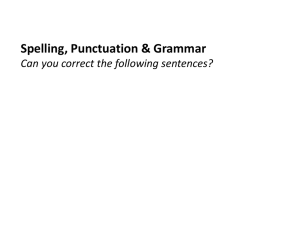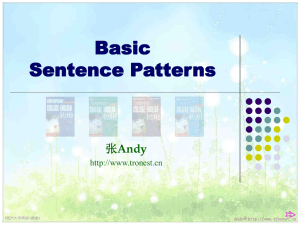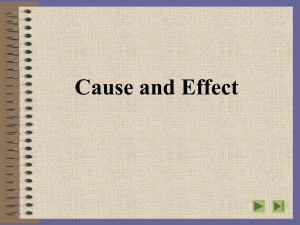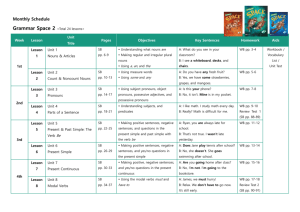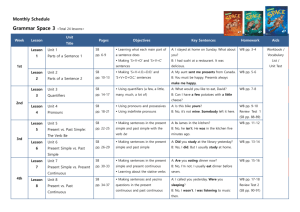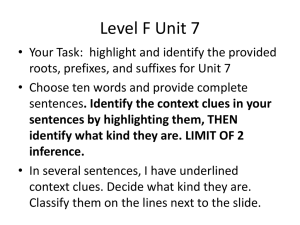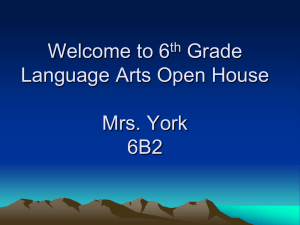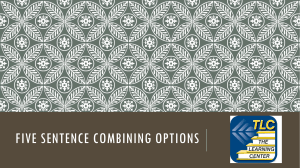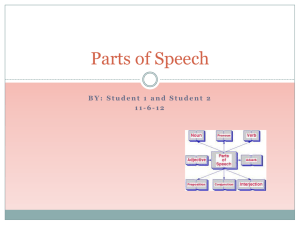Writing 101
advertisement
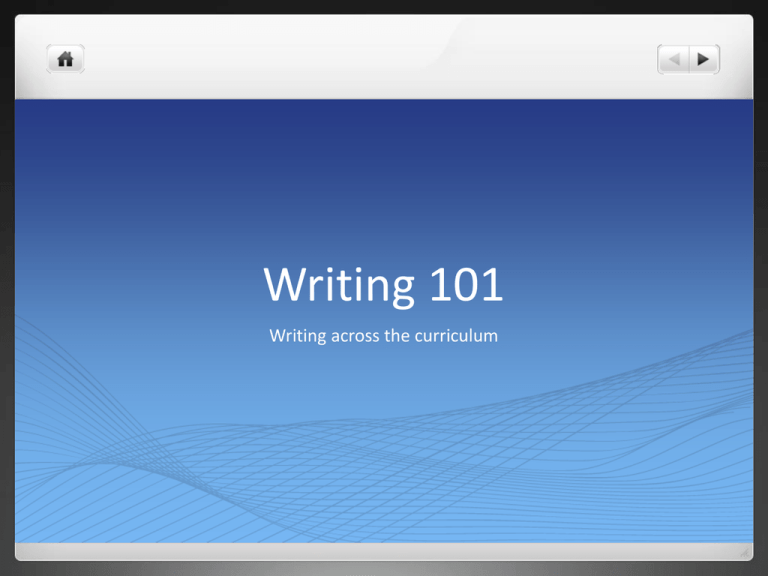
Writing 101 Writing across the curriculum Improving writing Write everyday 6+1 Writing Traits Organization Ideas Word Choice Sentence Fluency Voice Conventions Presentation Writing Process Planning Drafting Revising Editing Publishing Improving Writing Skills—Essential Components Direct instruction Feedback Teacher Individual and specific Variety of tools Strengths Accessible to all learning styles Next steps Write Every day All subject areas Variety of text structures Common language/terminology Criteria for feedback clearly stated Writing connected to reading To get better at reading you read To get better at writing you write Free response as a formative measure of writing Free response Read a selection aloud—stop and ask students to respond Write a sentence or draw a picture (younger students) Responses about content, character, or vocabulary Responses may include: What do you like or dislike about the text Where does the selection take place? How does it make you feel? What do you predict will happen? How does the character remind you of someone you know? How does the text connect to you and your life? Think, pair, share or turn to your neighbor Reread your response to yourself Group discussion Still agree with your response? No right or wrong answers Writing development At first it may be summary types of response—that is what students are used to Expands on ideas Improves sentence fluency Gives voice to writing Improves comprehension of reading Using responses to improve writing: Complete sentences Makes sense Short and choppy or run-on Start all sentences the same way Simple or more complex sentences (Adjectives, adverbs) Strong action verbs Take risks with new words or voice Improving writing at the sentence level Basic writing Building better sentences Pictures give kids words—Paint a picture using words Write down their responses Model conventions—Use word sentence to discuss what you are writing Choose action words rather than passive words Pattern—who, action, finish the thought (Three box sentences) Add descriptors—Adjectives and adverbs Add phrases and clauses (four box sentences) Three block writing Four block writing Moving to paragraphs Introduction Body Conclusion Topic Sentence Declarative statement--simple Number word included Situation/stand (starter words) Ask a question—paragraph will answer the question Beware My name is_____ and today I will tell you about…. In this paper, I will tell you about….. I’m going to write about…. Deadly duo: There are Here are Body sentences Big ideas Transitons First, second, third—level one Transition words and phrases Repetition of word or thought, pattern Conclusions Strong ending Summarize Repeat of topic sentence with different words “clincher” Words that signal a conclusion Examples and non examples of good conclusion words Good conclusive words Actually As a result Certainly Clearly Consequently Definitely In fact Obviously Surely/truly Beware All in all In conclusion That is all The end I hope you like my paper Let’s Summarize! Short and Sweet Summary or Retell? Summary>3rd or 4th Grade Big ideas Written Retell< 3rd or 4th Grade Main idea and details (Sometimes all details) Oral Lengthy, may contain information not necessarily found in the text Short, sequential, few details A Good Summary should…. Significantly shorter than original text Paraphrasing using own words not directly copied from text Big ideas in sequential order Eliminate most details (especially fluff) No personal opinions No outside information not found in text. Writing a good summary—Step 1: Topic sentence Name it (name of article and author) Verb it (What it does) Big picture (What does it tell me, what does it say?) List of verbs: tells, shows, describes, explains, discusses, listts, explores, illustrates, teaches, compares, contrasts Write a summary Step 2—Paraphrase big ideas. Jot dots using rule of 5 (five or less words) Encourages paraphrasing and chunking 4-6 jot dots (most of the time) Beginning, middle, end. (sequential) Main ideas from story. Write a summary: Step 3 Write out loud Turn to a neighbor and orally write you summary from your topic sentence and jot dots Turn each jot dot into a complete sentence Practice Helps clarify ideas Write a summary Step 4 and 5 4: Keep plan close by to refer back to. 5. Write the summary Response to Literature—Summary plus Short summary Personal connections—to self, world, or other text Author’s message or lesson, including a personal comment Questions Thank you!


